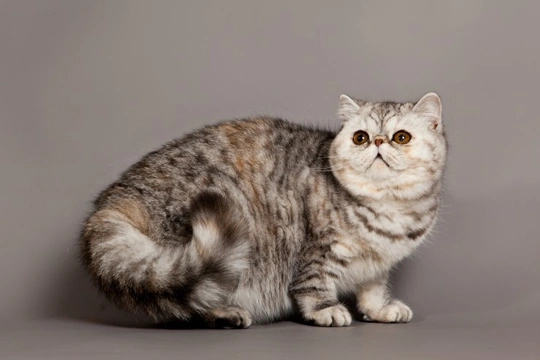
How to Recognise a Pedigree Cat: Complete Guide
If you're planning to own a pedigree cat, it's essential to understand how to spot a genuine one. While buying a pedigree kitten or cat might seem as simple as selecting your favourite breed online or from breeders, it's not always straightforward. Some cats advertised as pedigree are actually non-pedigrees, cross-breeds, or ‘moggies’ (mixed breeds). This guide will walk you through how to recognise a pedigree cat reliably so you can make a responsible and informed choice.
1. Understand Why Some Non-Pedigree Cats Are Mistakenly Advertised as Pedigree
Many people mistakenly believe that certain physical features alone confirm a cat breed. For example, all long-haired cats might be assumed to be Persians, or laid-back fluffy cats labelled as Ragdolls. This misunderstanding can arise from ignorance or wishful thinking. Unfortunately, there are also unscrupulous sellers deliberately misrepresenting non-pedigree or cross-breed cats as pedigree to demand higher prices. This deceptive practice is why being able to verify a pedigree cat's authenticity is so vital.
Purchasing a non-pedigree cat at a pedigree price is disappointing and unfair, so it's important to be a savvy buyer and look beyond appearances.
2. Research the Breed Thoroughly
Once you've chosen a breed you're interested in, dive deep into learning about it. Use authoritative resources such as books, respected websites, and official breed clubs. Our Cat Breeds page offers detailed photos and descriptions of many recognised breeds. Understanding exact coat colours, patterns, typical sizes, and unique breed traits is crucial. For example, black and white is not a recognised Bengal colour, which helps spot misrepresentation.
If possible, attend cat shows (often held weekly across the UK) where you can see your chosen breed in person, ask breeders questions, and meet reputable sellers. The GCCF website lists upcoming shows and breed standards. First-hand exposure helps you recognise genuine pedigree cats and informs your expectations.
3. Verify the Paperwork: The Pedigree Certificate
A true pedigree cat comes with a pedigree certificate — a documented family tree that traces back at least three to five generations. This certificate should be issued by a recognised cat registration organisation such as the GCCF (Governing Council of the Cat Fancy), TICA, or FiFE. It lists the names, registration numbers, colours, and birth dates of the cat's ancestors.
Ask the breeder or seller for this certificate before purchase. Genuine pedigrees categorically prove your cat's heritage. Without this, despite the cat's appearance, you cannot be sure it is a pedigree, and paying a premium price may not be justified. Always be wary of cats sold as crosses or mixed breeds which cannot have pedigree certificates and generally shouldn't be sold at pedigree prices.
4. Registered vs. Unregistered Cats: Why Registration Matters for Showing
If you plan to show your cat, registration with an official governing body is essential. A cat that is registered with an organisation like GCCF or TICA is guaranteed to have verified pedigree lineage. You should receive not only the pedigree certificate but also a registration certificate that allows your cat to compete in cat shows.
Cats sold as pedigree kittens but not registered with a governing body might still have some breeding history documented privately, but their full pedigree cannot be independently verified. For showing or breeding, always insist on official registration.
5. Physical Traits Can Help But Are Not Definitive
While pedigree cats share breed-specific traits such as coat length, pattern, body shape, and eye colour, these alone aren't proof of pedigree status. Traits like a Persian's flat face, a Siamese's blue eyes and pointed coat, or the Bobtail's distinctive tail are breed features, but nothing replaces verified documentation for authenticity.
Genetic variability and cross-breeding can create cats that look like a particular breed but lack pedigree. For peace of mind, use physical characteristics as guides rather than guarantees.
6. Protect Yourself: Buy from Reputable Breeders
To avoid scams and disappointments, seek out well-known reputable breeders or breed clubs. Responsible breeders will be happy to provide extensive documentation, meet you in person, and answer all your questions honestly. They prioritize your cat's welfare and breed quality over quick sales.
Check for breeder memberships in recognised organisations and reviews from previous buyers. If you decide to purchase through websites like Pets4Homes, scrutinise the advert thoroughly and ask for all paperwork in advance.
Common Questions When Buying a Pedigree Cat
What paperwork should I check when buying a pedigree cat?
The essential paperwork is a registered pedigree certificate from a recognised body such as GCCF, TICA, or FiFE, detailing your cat's ancestry. Registration certificates are also important if you plan to show or breed your cat.
Can a cat look like a pedigree breed but not be one?
Yes, many non-pedigree cats may physically resemble popular breeds but lack the verified lineage, so paperwork is key to confirming pedigree status.
Are all cats with parents of the same breed considered pedigree?
No, if the cat isn't registered with a breed association and lacks official documentation, it is considered purebred but not pedigree.
Conclusion
Choosing to own a pedigree cat should be done with knowledge and care. Understanding breed characteristics, verifying documentation, and buying from reputable sources are essential steps to ensure you get a genuine pedigree cat. Remember, while moggies offer wonderful companionship at a lower cost, pedigree cats command a premium price for good reasons linked to their documented ancestry and consistent breed traits.
Be informed, ask questions, and treat the purchase of your precious feline family member with the same care as buying any high-value item. Good luck finding your perfect pedigree cat!



